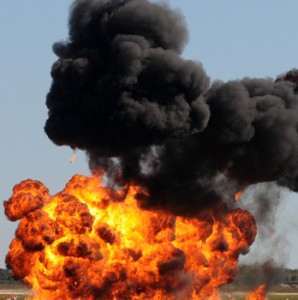The DOT's Federal Railroad Administration issued an emergency order on Friday that establishes a maximum speed of 40 miles an hour for certain trains going through high threat urban areas.
Related: Bakken Crude by Rail Under Attack
Citing “gaps in the existing regulatory scheme”, the agency beefed up the 2014 voluntary agreement by making this speed limit a requirement for trains hauling crude oil and other flammable liquids. The emergency order defines affected trains as:
- 20 or more loaded tank cars in a continuous block or 35 loaded tank cars of class 3 flammable liquid
- AND at least one DOT-111 tank car loaded with class 3 flammable liquid
“The emergency order states that “Speed is a factor that may contribute to the severity of a derailment or the derailment itself. Speed can affect the probability of an accident. A lower speed may allow for a brake application to stop a train before a collision, or allow a locomotive engineer to identify a safety problem and stop the train before an accident or derailment occurs.”
The requirements go into effect immediately and carry potential penalties of $105,000 dollars for companies that don’t comply.
This order is one of many attempts by the DOT to address this huge issue of rail safety including two previous emergency orders in the last two years. The department has also proposed a more comprehensive series of regulations that are under review by the White House that includes a stronger tank car design and better train braking systems.
Read more at fra.dot.gov




